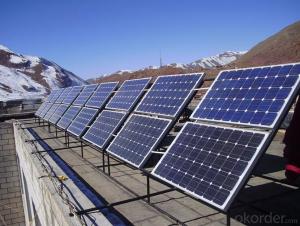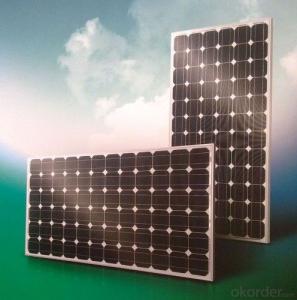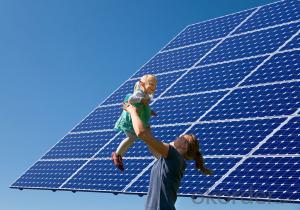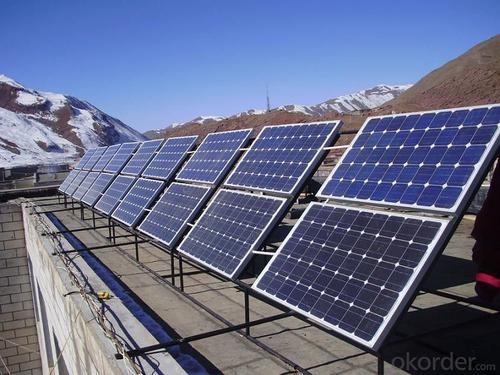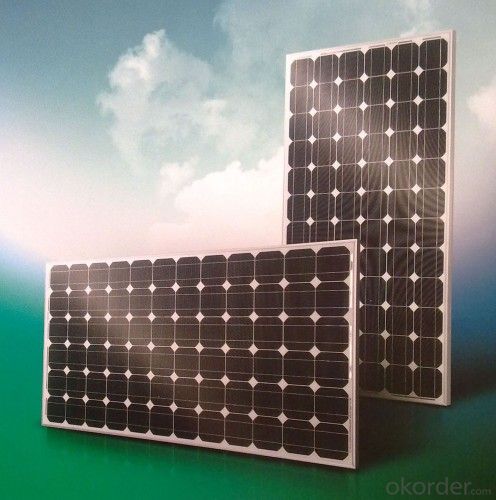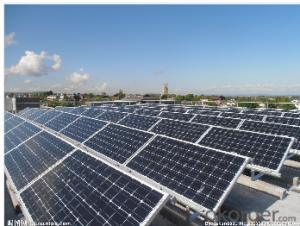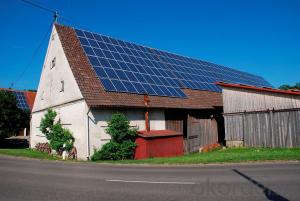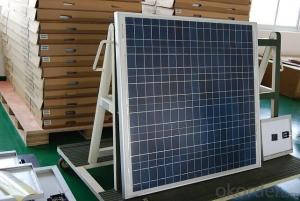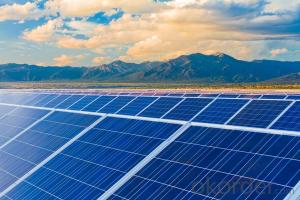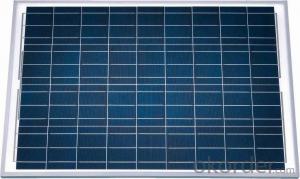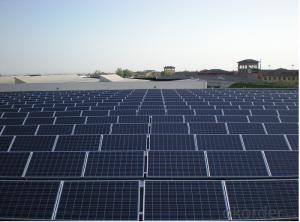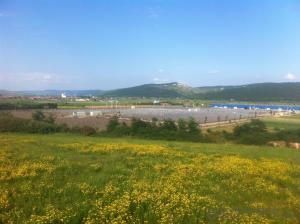30W CNBM Solar Monocrystalline 156 Series Swimming Pool Solar Panels for Sale
- Loading Port:
- China main port
- Payment Terms:
- TT OR LC
- Min Order Qty:
- 100000 watt
- Supply Capability:
- 10000000 watt/month
OKorder Service Pledge
OKorder Financial Service
You Might Also Like
About us
CNBM International Corp, established in 2004, is the business entity for trade and logistic of CNBM Group.With the advantages in Cement, Composite Materials, New Building Materials and Engineering, CNBM mainly concentrate on coal, steel and construction equipments and give priority to solar and wind energy development.CNBM International is highly recognized by its business partners and clients all over the world and has established good business relationship with the customers in over 120 countries and regions all over the world.
Components
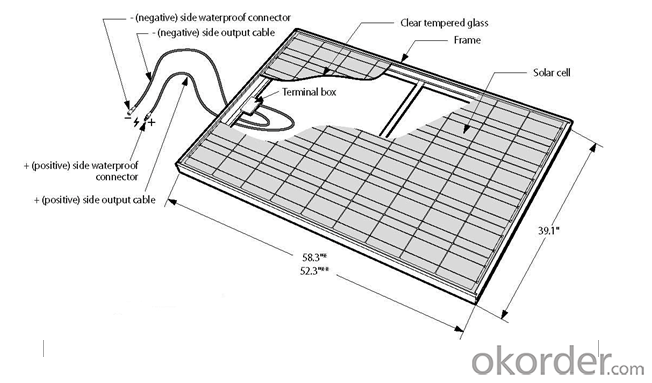
Wiring
To ensure proper system operation to maintain your warranty, observe the correct cable connection polarity(Figures 1&2) when connecting the modules to a battery or to other modules. If not connected correctly, the bypass diode could be destroyed.
PV modules can be wired in series to increase voltage. Connect wires from the positive terminal of one module to the negative of the next module. Figure shows modules connected in series .
Data sheet
| Characteristics | |
| Max Power Voltage Vmp (V) | 17.6V |
| Max Power Current Imp (A) | 1.71A |
| Open Circuit Voltage Voc (V) | 22.6V |
| Short Circuit Current Isc (A) | 1.83A |
| Max Power Pm (W) | 30W |
| Temperature Coefficient of Cells | |
| NOCT | 47℃±2℃ |
| Temperature Coefficients of Isc (%/℃) | 0.06% |
| Temperature Coefficients of Voc (%/℃) | -0.32% |
| Temperature Coefficients of Pmp (%/℃) | -0.45% |
| Mechanical Data | |
| Type of Cells (mm) | Mono156×31.2 |
| Dimension | 510×450×25mm |
| Weight | 2.7kg |
| NO.of Cells and Connections | 3×12=36 |
| Limits | |
| Operating Temperature | –45°C to +80°C |
| Storage Temperature | –45°C to +80°C |
| Max System Voltage | 700V |
FAQ:
1. How long will my inquiry get response?
Your inquiry related to our products or prices will be replied within 24 hours.
2. Can I get professional service and suggestion?
Well-trained and experienced staffs to answer all your questions in fluent English.
3. Do you accept OEM or customized design?
OEM & ODM, any your customized lightings we can help you to design and put into product.
4. What if I need specific design?
Distributorship are offered for your unique design and some our current models.
- Q: What are the benefits of using solar panels?
- There are several benefits of using solar panels. Firstly, solar panels generate renewable and clean energy by harnessing the power of the sun, reducing our dependence on fossil fuels and reducing greenhouse gas emissions. Additionally, solar panels can help to save money on electricity bills, as they generate free electricity once installed. They also require minimal maintenance and have a long lifespan, providing a reliable source of energy for years to come. Moreover, solar panels can increase the value of a property and contribute to energy independence, especially in remote or off-grid areas. Overall, the use of solar panels promotes sustainability, cost savings, and a cleaner environment.
- Q: Can solar panels be installed on a carport structure?
- Yes, solar panels can be installed on a carport structure. In fact, carports are a popular choice for solar panel installations because they provide a dual purpose of providing shade for vehicles while generating clean, renewable energy. The structure of a carport offers ample space for solar panels to be mounted, allowing for efficient energy production while maximizing the use of available space.
- Q: Also, what's the solar panel's rate of producing electricity?
- Solar panels really can't compete with fossil fuels of any kind. They're great for low power consumption applications, but I doubt we'll ever see solar powered steel refineries or heavy manufacturing plants. A solar panel that produces 75 watts is about 62 x 33 (5 feet by almost 3 feet). 75 watts is enough to power a couple light bulbs; you'd certainly never cook anything on it. On the other hand consider how much heat and light is produced by a small natural gas fireplace or stove burner. It would take a lot of those 5 foot long solar panels to equal that.
- Q: How Much energy does Solar Panel Produce,and How long can Solar Panels go without maintenance.
- There really isn't any maintenance you need to preform...all you really have to do is clean the surface once in a while. However cleaning the surface is not crucial. A rough rating for a panel is about watt for every 9-2 square inches.
- Q: Can solar panels be used in areas with high levels of snow or ice?
- Yes, solar panels can be used in areas with high levels of snow or ice. However, their efficiency may be reduced during winter months due to reduced sunlight exposure and accumulation of snow or ice on the panels. To mitigate this, solar panels can be installed at an angle to allow snow to slide off, or they can be equipped with heating systems to melt the snow or ice. Additionally, regular maintenance and cleaning may be required to ensure optimal performance in snowy or icy conditions.
- Q: How do solar panels impact the local economy?
- Solar panels can have a positive impact on the local economy in several ways. Firstly, the installation and maintenance of solar panels create jobs, boosting employment opportunities in the area. Additionally, the use of solar energy reduces dependency on traditional energy sources, which can lead to lower energy costs for businesses and residents, freeing up more money to be spent locally. Furthermore, solar panel installations often require local partnerships and suppliers, supporting local businesses and stimulating economic growth. Ultimately, the adoption of solar panels contributes to a more sustainable and resilient local economy.
- Q: Is it as simple as buying the panels, an inverter and plugging it into a wall-socket, assuming it would just send power back into the outlet and supplement my house's electrical usage, or... Is it not that simple?Remember, I'm talking about a SMALL system, and I don't care how little power it'd make, or how uneconomical it would be.
- If I were to assume you could (and I don't) you'd be back feeding voltage into your breaker and probably ruin it. Or worse, start a fire somewhere on that circuit. Not to mention the need to match the Hertz AND the signal. Short answer is No, you can't do that. Not because of code - but code wouldn't allow it anyway, but because it is foolish and beyond dangerous - it's a guaranteed disaster. Hope this helps. ??? —
- Q: Can I add reflectors or mirrors around the solar panels to increase the power they generate?
- You could (an example of concentrating sunlight is called cloud gain, where the edge of a cloud will intensify sunlight as it passes between the sun and your panels), but that will make your panels run hotter and will probably reduce their life. It's better from a system design standpoint to simply get another panel or two. DK
- Q: Can solar panels be installed on agricultural or farming operations?
- Yes, solar panels can be installed on agricultural or farming operations. In fact, many farmers have been adopting solar energy as a sustainable and cost-effective solution to power their operations. Solar panels can be mounted on rooftops, open fields, or even integrated into structures like barns or greenhouses. By generating clean energy, farmers can reduce their reliance on traditional energy sources, lower operational costs, and contribute to a greener future.
- Q: Can solar panels be installed on a university or college campus?
- Yes, solar panels can absolutely be installed on a university or college campus. In fact, many educational institutions have already embraced solar energy and installed solar panels on their campuses. These panels can be placed on rooftops, parking structures, or open spaces to generate clean and renewable electricity. Installing solar panels not only helps reduce the environmental impact of the campus but also provides educational opportunities for students to learn about sustainable energy practices.
Send your message to us
30W CNBM Solar Monocrystalline 156 Series Swimming Pool Solar Panels for Sale
- Loading Port:
- China main port
- Payment Terms:
- TT OR LC
- Min Order Qty:
- 100000 watt
- Supply Capability:
- 10000000 watt/month
OKorder Service Pledge
OKorder Financial Service
Similar products
Hot products
Hot Searches
